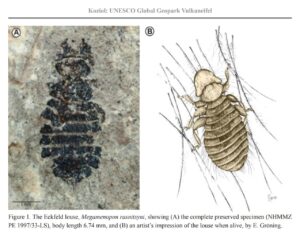Iharkút is a Late Cretaceous (Santonian) vertebrate-bearing locality in the Bakony Mountains of western Hungary, where productive and continuous paleontological excavations have been carried out in the last twenty years. Fieldwork resulted in a very rich and diverse assemblage of terrestrial and freshwater animals, including fishes, amphibians, turtles, lizards, a freshwater mosasaur, pterosaurs, crocodilians, dinosaurs, […]
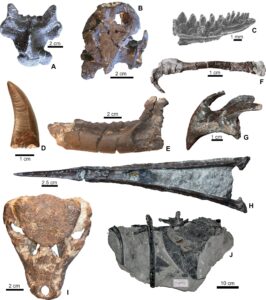
We review here key geological heritage elements of the Hațeg Country UNESCO Global Geopark (Southern Carpathians, western Romania) represented by latest Cretaceous continental vertebrate fossils and the sedimentary rocks enclosing them. Based on available geological and paleontological evidence, these animals were living on a tropical island. This paleogeographic setting led to the development of some […]
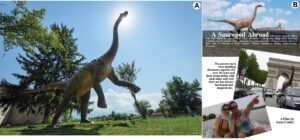
The Viar Basin, the largest of the Carboniferous basins in the Sierra Norte de Sevilla UNESCO Global Geopark, has yielded an important fossil flora. The flora is important stratigraphically and paleoecologically, and the collection sites have significant heritage value as they were studied by eminent geologists of the late nineteenth and early twentieth centuries. The […]
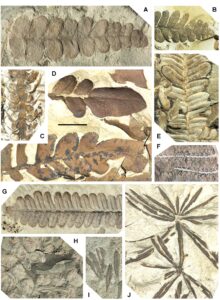
In 1898, when the first dinosaur eggs were discovered in Hațeg Country (which in 2005 became part of the UNESCO Global Geopark Network), not one dinosaur egg had ever been unearthed either in the vicinity or anywhere in Romania. Twenty years later, tens of sites bearing remnants of dinosaur eggs – of which at least […]
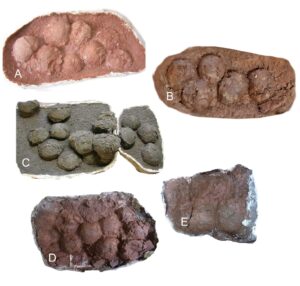
The late Paleozoic deposits in several basins of the Bohemian Massif are well known for their rich abundance of petrified tree trunks. The area of the UNESCO Global Geopark Bohemian Paradise includes a substantial part of one of the largest ones, the Krkonoše Piedmont Basin. Deposits of this basin contain the most complete fossil record […]
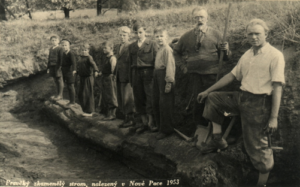
Despite its paleontological importance, the Messel Pit was under threat to become a waste disposal site, and its eventual designation as the first Natural World Heritage UNESCO geosite in Germany followed an intense fight in which numerous principles of geoheritage and geoscience popularization were explored. The UNESCO agenda 2030 for sustainable development is the basis […]
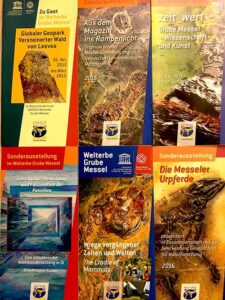
Carboniferous fossils from the Burren and Cliffs of Moher UNESCO Global Geopark, County Clare, Ireland are rated by their promotional potential in the form of celebrity A, B or C-listings. Trace fossils, crinoids, brachiopods, corals and vertebrates are the most exposed to public view at a number of high-profile visitor locations and the relative risk […]
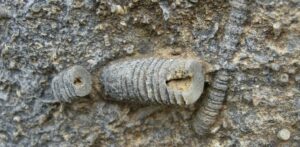
Anthropogenic climate change may result, within 200 years, in warm and equable climatic conditions not experienced on Earth for tens of millions of years. Ancient ecosystems under such “greenhouse” conditions may be seen as natural experiments, and their study may help us anticipate the future, should mediation fail. The Messel Pit, a UNESCO World Heritage […]
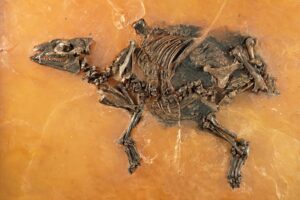
The Permian breccias, conglomerates and sandstones of the English Riviera UNESCO Global geopark were deposited in quite harsh, desert environments just north of the Permian Equator. Body fossil evidence is completely lacking but rare trace fossils provide evidence of a land-based community. There is a variety of traces present, probably indicative of the presence of […]
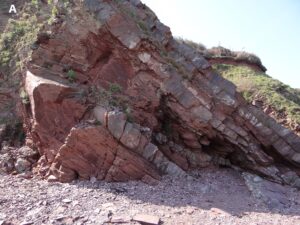
Some of the most spectacular fossil deposits of the European Tertiary are former maars located in old volcanic field areas. The Tertiary volcanic field of the High Eifel (THV) lies between the two Quaternary volcanic fields of the West and East Eifel and extends far into the West Eifel. The Eckfelder Maar lies on the […]
